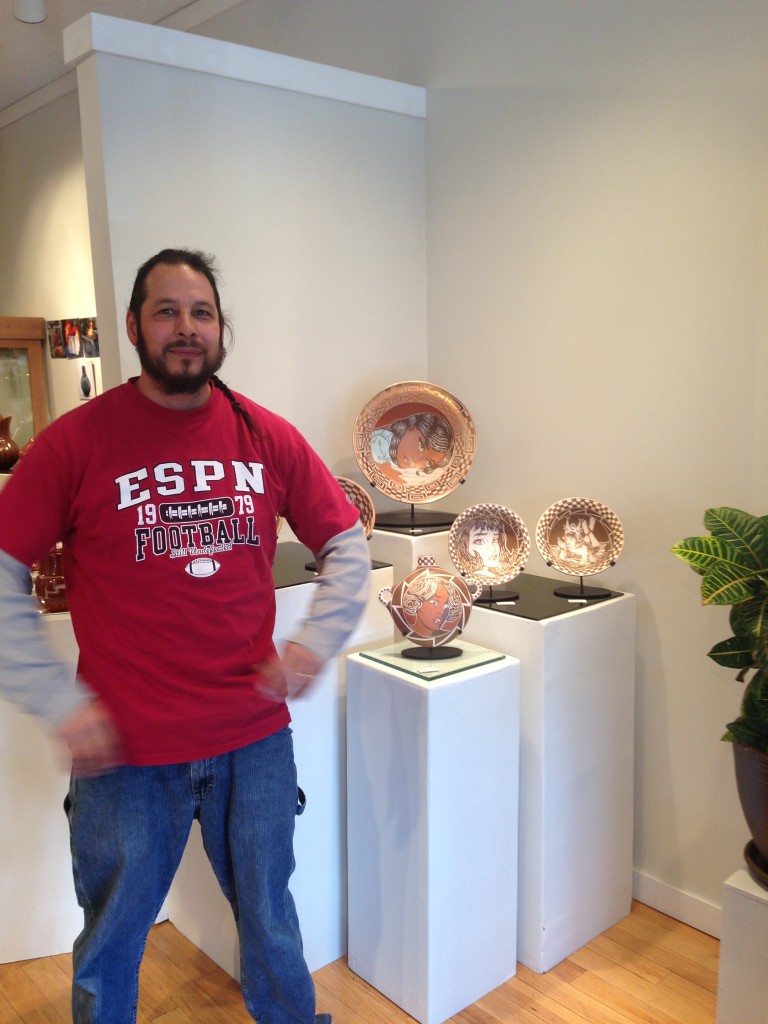King Galleries Blog
Defining Diego Romero: Examining his Imagery and Iconography
Defining Diego Romero’s Imagery:
For the past twenty years Diego Romero has been making art that transcends his Native American Indian heritage. While using the “traditional” materials, techniques and forms of Southwestern Indian pottery he uses comic book inspired iconography to chronicle Native life.
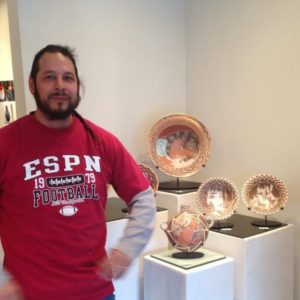
As a student at the Institute of American Indian Art in Santa Fe, Diego learned to make pottery under Otellie Loloma. Later, he studied under Ralph Bacera at Otis/Parsons Institute in Los Angeles, learning about glazes and lusters. In a MFA program at UCLA, Adrian Sax urged Diego to incorporate “content” into his work. The result was the creation of the Chongo Brothers – depicting modern Native life by borrowing from the ancient Mimbres culture of southwestern New Mexico. Diego received his MFA in 1993 and moved to Santa Fe, NM.
In the late 90‘s, Diego wanted to depict more heroic aspects of Native life but the Mimbres/comic book style didn’t seem to be appropriate. When Diego was young, his father, who was a painter, not only told stories about growing up at Cochiti Pueblo but would also read from the classics – including the Iliad and the Odyssey. And, while at UCLA, Diego had been fascinated by ancient Greek ceramics. Therefore, when his subjects were engaged in heroic activities, Diego began using the more muscular body styles found on ancient Greek ceramics.
Diego said of his work, “I didn’t want to use sacred imagery out of respect for my tribe, so I was forced to develop other alternatives…I’m attracted to the narrative of Greek pottery; they elevated the hero to a superhero. I think that I have developed a narrative and a voice. I like these little cartoony, political comics on the bowls and I like the fact that I can make fun and comment on the history of the Pueblo people at the same time.”
Click here to view new works by Diego Romero!
|
Bowl Shaped Pottery:
|
Diego says of his pottery, “The bowls are more of a canvas and tend to make statements, often political, about contemporary Indian life”. Garth Clark writes that the bowls are, “free of any marks from the hand except on the rim, where he adds a few coils and leaves his finger marks. The sharp, squared-off flat rim is not part of the Indian pottery vocabulary but adds to his contemporary stylization of the form. The shape was selected not just for its neo-Native look, perfect geometry and sleek line, but also for practical reason It offers the largest expanse for an interior canvas. “ |
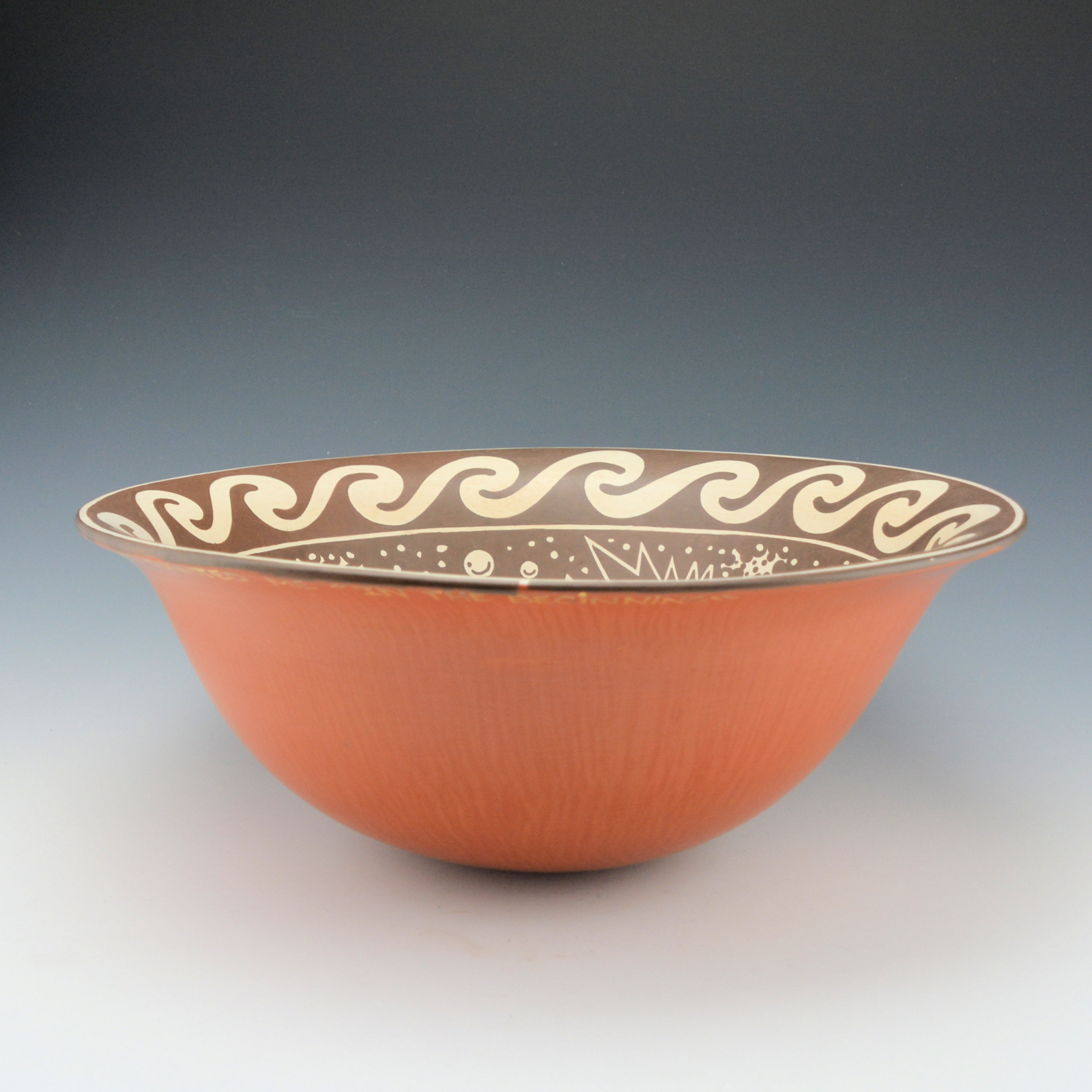 |
|
Cartoon or Comic Painting Style:
|
Diego refers to his style of painting as “definitely cartoony or comic book”, but the distinctive result is his way of relating the contemporary to the ancient.
|
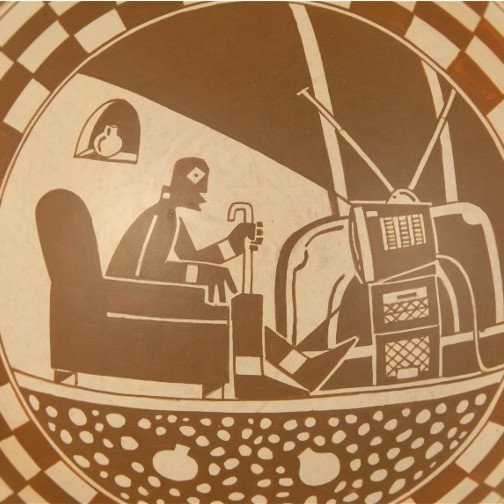 |
|
Chongo Brothers:
|
Two of the characters who appear in much of Diego’s pottery. They are the alter egos for himself and his brother Mateo, representing “laid back Native superheros appearing at the center of the action” in his pottery. Chongo is a term applied to the Native men who wear their hair in a traditional bun.
|
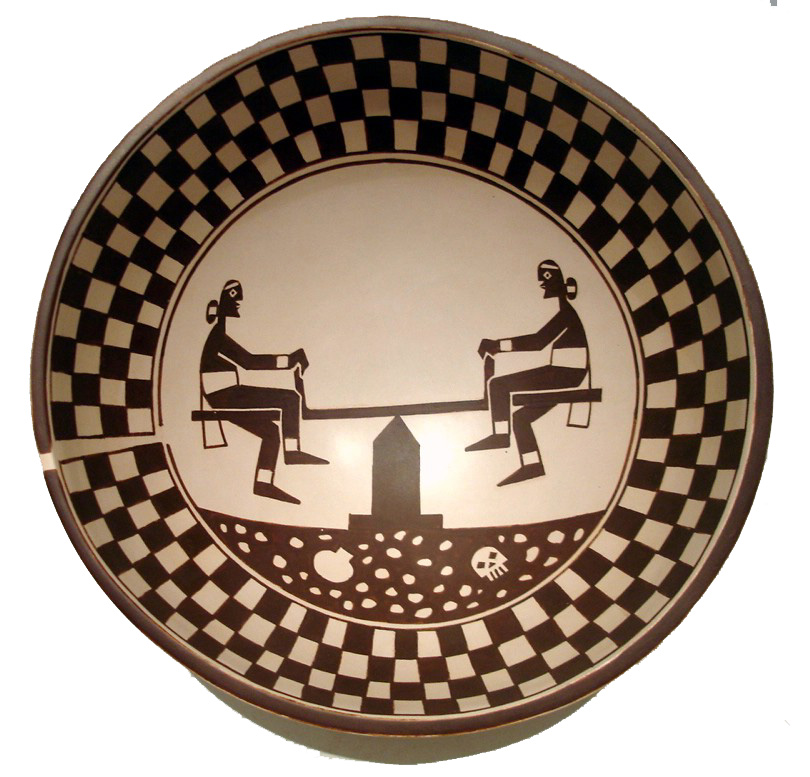 |
| Coyote:
|
This is one of the main characters in Diego’s work. Coyote was inspired by the work of Keith Haring and has a similar blocky style. Originally Coyote (the trickster) tempted us to drink too much, messed with our cars and made us behave badly. Later on coyote appeared dancing in groups per Haring – but more representing happiness and fun (Life is Good). Fox and Hound were a whimsical addition to make a happy trio. |
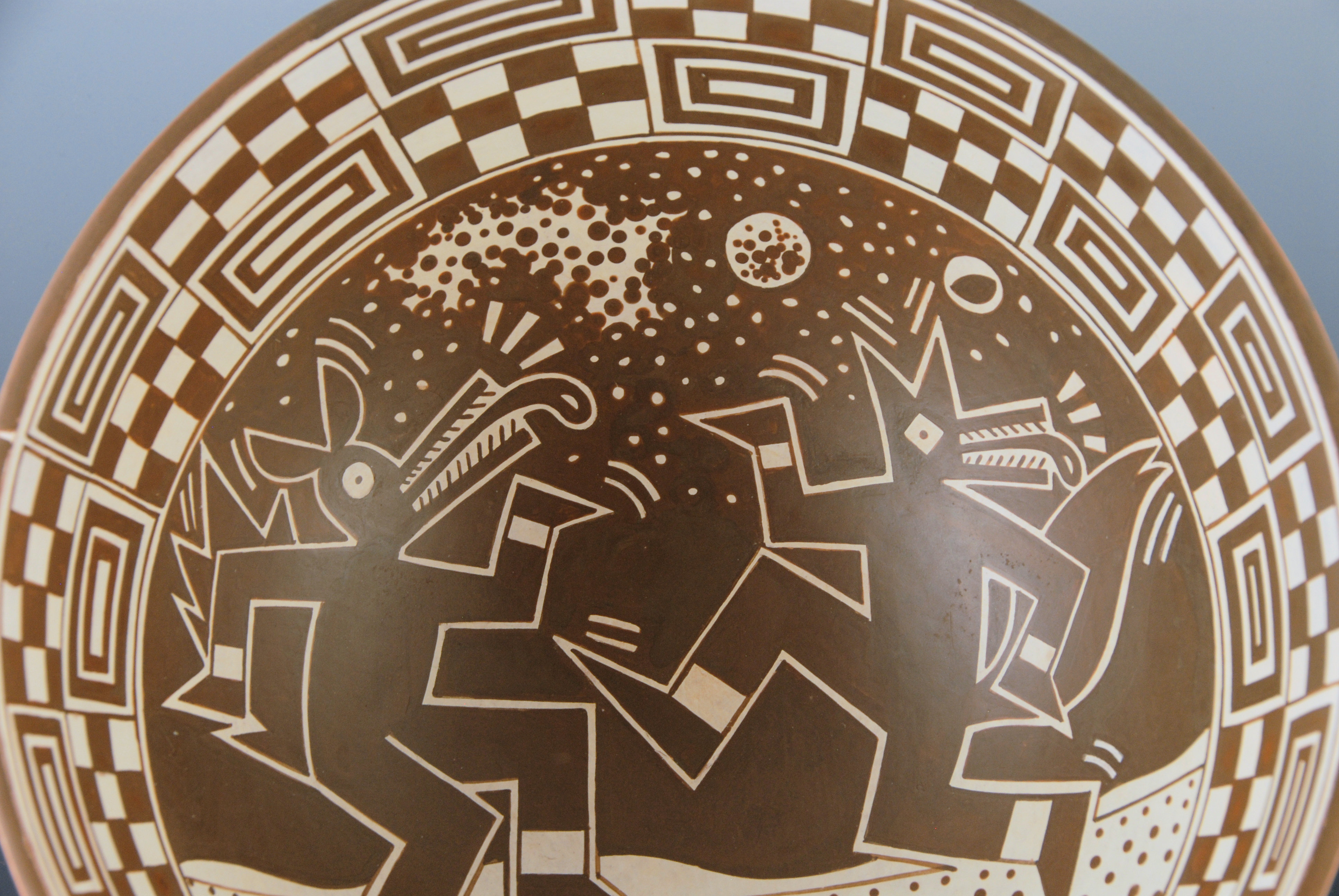 |
|
Hound and Fox:
|
Two new characters who have been recently introduced into his work who interact with Coyote. To the right the bowl has all three of the characters. On the top left is Hound, top right is Coyote and on the bottom is Fox.
|
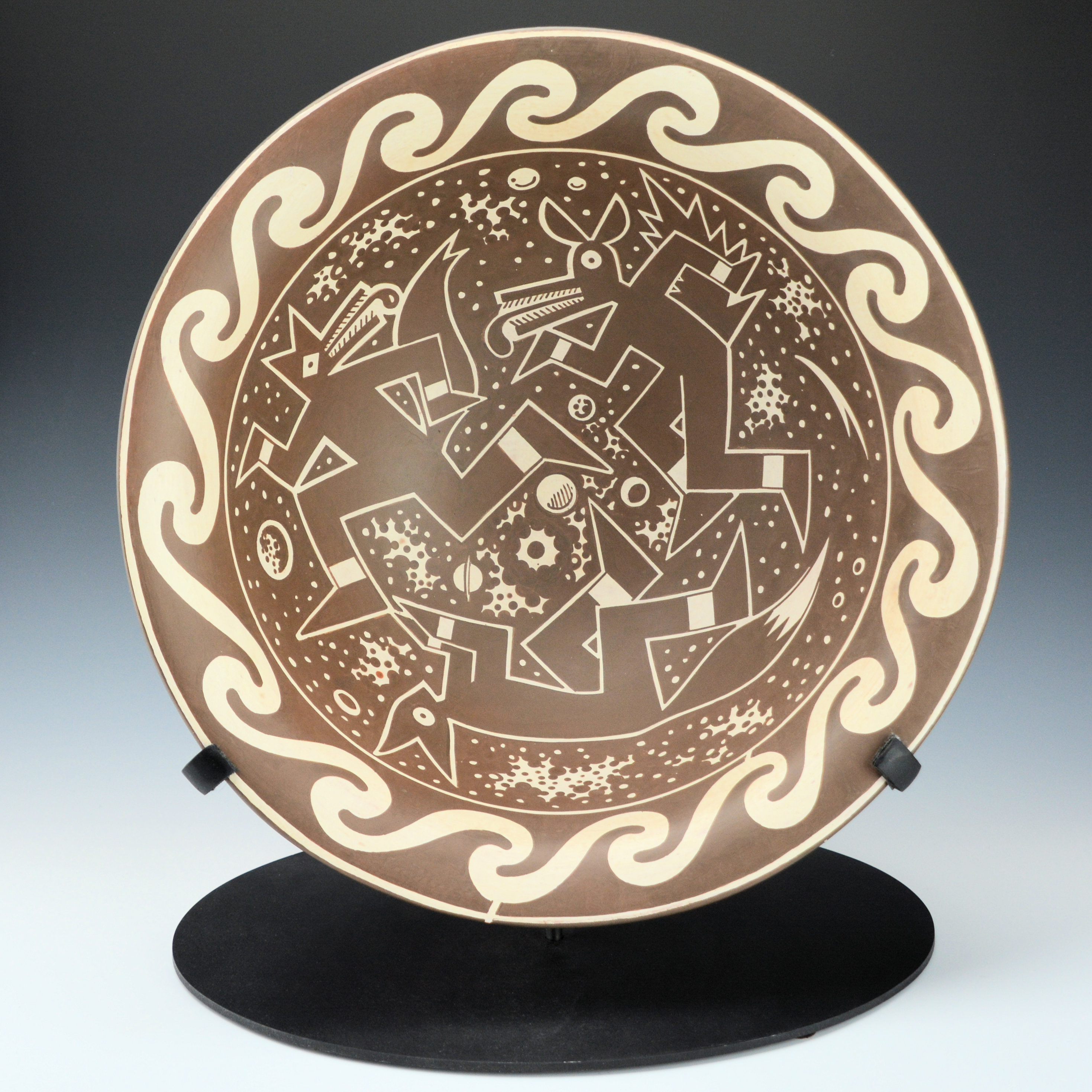 |
|
Mimbres Pottery:
|
The Mimbres Culture was located in southern New Mexico around 1100 – 1150 AD. The are was called “Mimbres” by the Spanish for the small willow reeds which grow in the area. They are famous for their open bowl with tightly painted designs. The imagery depicts everything from realistic life experiences, to animals, hunting, and imagery creatures. Diego uses the shape of the Mimbres pottery for his bowls and replicates the central design pattern and surrounding painted designs as the format for his imagery. |
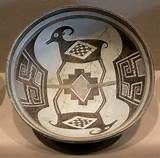 |
|
Pop Art:
|
The Pop Art style of Diego’s work is best expressed in the book Free Spirit, where Garth Clark writes, “Romero is a Pop artist before he is an Indian artist. For some, it may seem to stretch to place the mild-mannered Romero with is modestly sized bowls in the context of Lichtenstein, Warhol and Claes Oldenburg…Admittedly, like many young artists who work within the Pop Art modality today, his work differs from the relative neutrality of early Pop imagery. Romero’s’ images have teeth and have been known to bite but his illustrative style, his readiness to take on banal aspects of everyday life, and his use of humor to give his arguments a wider audience unquestionably place him in this particular lineage of American art.“
|
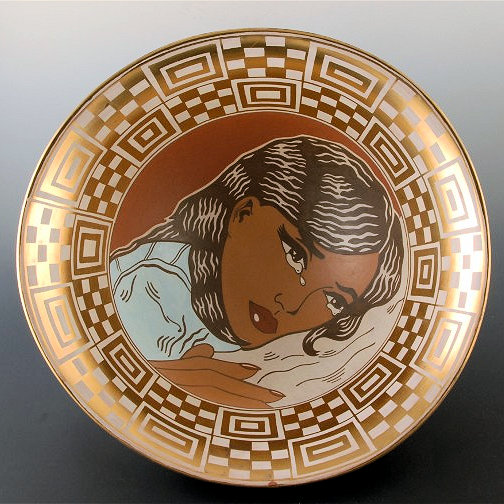 |
|
Signature:
|
Diego signs his pottery: “Chongo Made and Painted Me“. Chongo is how he refers to himself and as one of the characters he uses in his pottery. |
 |
|
“Where the Wild Things Are”
|
A children’s book by Maurice Sendak. Diego loves this book and has used it as inspiration for some of his recent work.
|
 |
|
“Wonder Woman”
|
Diego is a huge fan of comic books, especially Wonder Woman, as is seen in a series of his work.
|
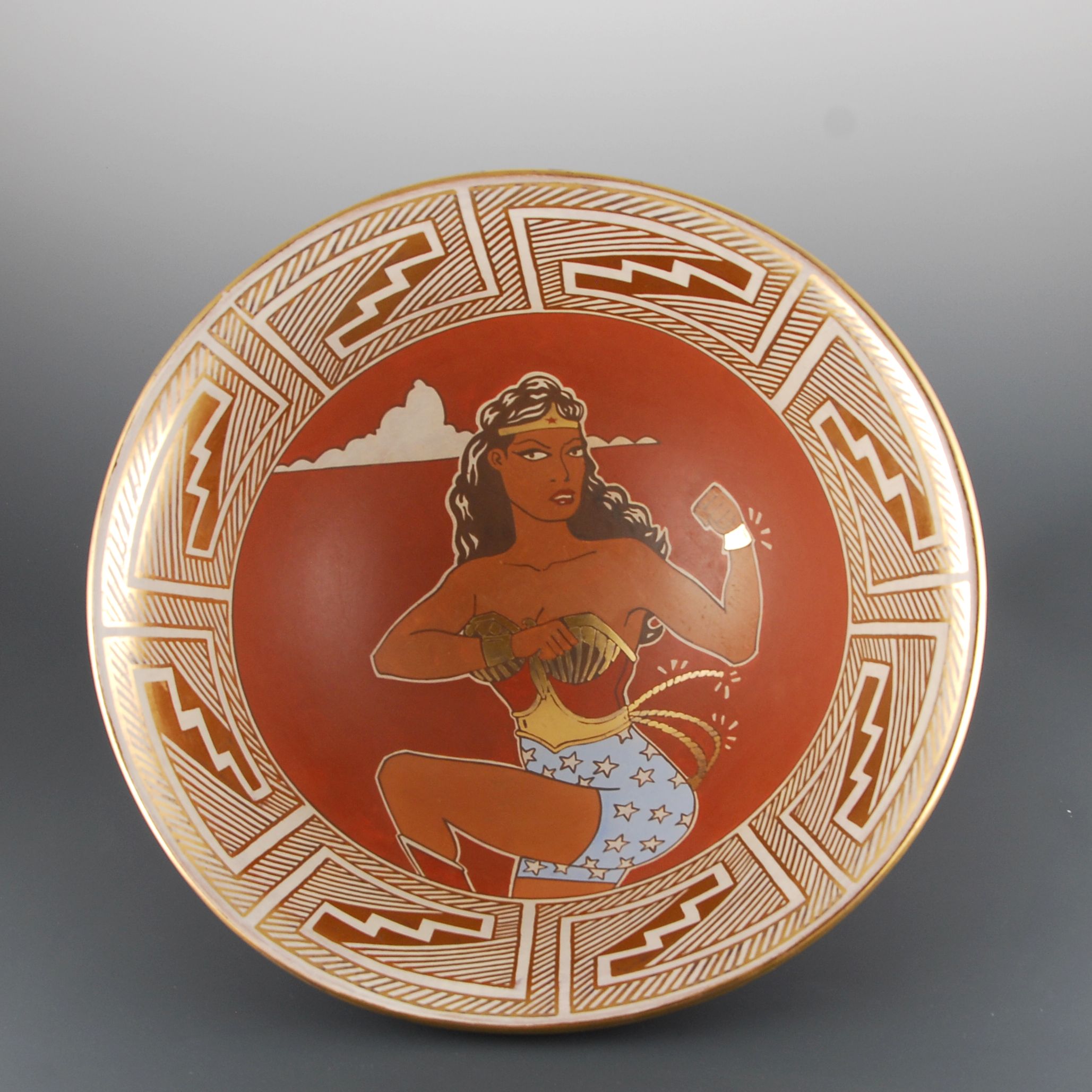 |


